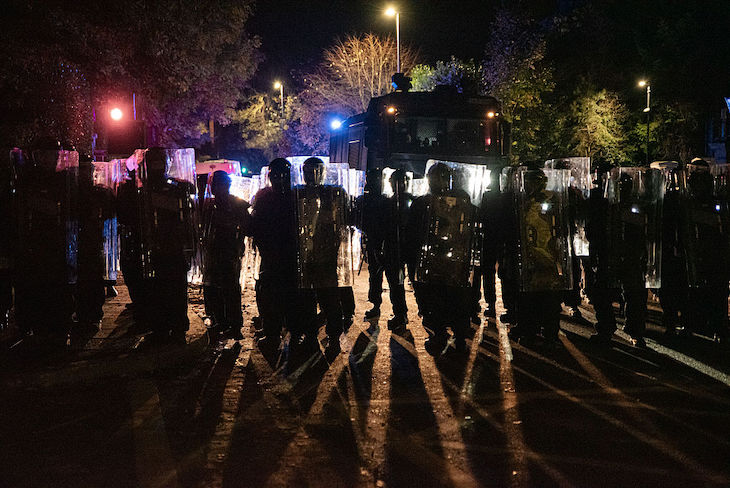Ukraine’s worst nightmare is coming true: Vladimir Putin has presented the bill to end his war – and Donald Trump is forcing Kyiv to pay it. After 12 hours of talks with seasoned Russian diplomats in Saudi Arabia, the US delegation was so worn out and desperate for a win that they agreed to ease sanctions on Russia. In return, Moscow pledged not to bomb civilian vessels in the Black Sea and to halt strikes on energy and oil infrastructure if Kyiv does the same. But soon after the meeting ended, the Kremlin extended its list of demands.
Volodymyr Zelensky says this isn’t what Ukraine and the US agreed to
Trump’s administration vowed to help Russia regain access to global agricultural and fertiliser markets, lower maritime insurance costs and reopen ports and payment systems for its exports. Moscow then published its own, extended version of the agreement: the sanctions must be lifted from Russian food and fertiliser producers, exporters and shipping vessels; Russia’s Rosselkhozbank and other financial institutions must be reconnected to SWIFT; and restrictions on trade finance transactions must be removed. Until then, there will be no truce in the Black Sea – only an energy ceasefire.
Washington is playing along. Trump, while grumbling that Russia may be ‘dragging their feet’ on the peace deal, still agreed to review all of Putin’s terms. Volodymyr Zelensky says this isn’t what Ukraine and the US agreed to. The sea truce supposedly came into effect yesterday, right after the White House published a summary of the negotiations – although the US omitted any dates in its statement. By midnight, Kyiv realised it had been played: Russia will keep bombing Ukrainian cities under the pretext of targeting military sites while enjoying sanctions relief in return. On Monday, Russian missiles hit a residential area in the city of Sumy, injuring over a hundred people, including 23 children.
Oleksandra Ustinova, Ukrainian MP and adviser to the Defense Department, said the deal is conveniently timed as global demand for fertilisers surges and Russia is poised to replace Canada as a primary supplier to the US. On top of that, Russia have sold nearly $1 billion (£700 million) worth of Ukrainian grain it stole from occupied regions despite sanctions since 2022. That number will spike if the US reaches an agreement with the G7 and especially the EU where unanimity would be required to lift them.
Ukraine is starting to look like the only loser in the peace talks. Zelensky is alarmed that Trump has been discussing the status of Ukrainian territories with Moscow without Ukraine involved. Now, Kyiv is barred from launching deep strikes on Russian oil refineries and depots, its most effective weapon against Putin’s war machine. Over the past six months, such attacks have destroyed 50 Russian oil reservoirs and damaged another 47.
In return, Moscow will stop hitting Ukraine’s power plants, but not that it matters. Russia hasn’t been striking them since winter ended. It typically stockpiles missiles during the warmer months, only to unleash them when the cold returns – when Ukrainians are most vulnerable. The Kremlin is now targeting Ukraine’s railway power substations near the frontline, with Russian propagandists openly admitting to the strikes on Russian TV this week. So much for the energy ceasefire.
As for the Black Sea truce, Ukraine’s defence minister, Rustem Umerov, warned that Russian military vessels must now stay out of the eastern part of the sea – or Ukraine will exercise its right to self-defence. This isn’t an empty threat: since 2022, Ukrainian-made missiles and sea drones have sunk or damaged a third of Russia’s Black Sea fleet – more than 20 vessels. Last year, Moscow was forced to withdraw its final patrol ship from occupied Crimea to the relative safety of Novorossiysk. Soon, those same warships will be creeping back into Black Sea waters.
Even if Moscow stops attacking civilian vessels and ports, it won’t make much of a difference. After Putin pulled out of the original grain deal in 2023, Ukraine set up its own corridor along Odesa’s coastline, with exports surging back to pre-war levels. Trump’s version of the ‘Black Sea Initiative’ could once again allow Russian militants to inspect Ukrainian ships for ‘hidden weapons’, causing weeks of delays and giving the Kremlin yet another stranglehold over Ukraine’s economy. Ukraine could use the ceasefire to restore the ports in Mykolaiv and Kherson, devastated by Russian strikes – but the damage was so substantial that it will need more than 30 days of truce to get the job done.
Since Trump returned to office, Ukraine has made one concession after another: giving up on Nato membership, accepting a ceasefire without security guarantees upfront and halting strikes that were devastating Russia’s war machine. Kyiv is bending over backwards to be closer to peace, but there is a limit to how much it can surrender. If Trump’s art of the deals ends up giving Russia everything it wants, Ukraine can always refuse to sign anything binding. As CIA Director John Ratcliffe pointed out during a US Senate hearing yesterday, Ukrainians will fight Russia with their bare hands if they find the terms of peace unacceptable.








Comments